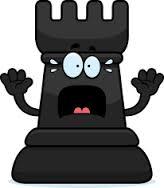
Depth and Subtlety in Rook Endings is Mind Blowing
Resuming my study on Chess Informant's Rook Endings II, I was oustanded at the depth and logic behind a position A. Cheron published in 1944. Literally I could write every blog entry about each position in this book and fill pages upon pages.
Rook Endings are the one aspect of Chess where I feel I'm awakened to ideas in Chess that I never considered. It's true imagination. It's hard, but if it was easy, everyone would do it.
This is from Diagram 205 of Chess Informant's Rook Endings II
The key motifs here is Black's attempt to get in front of the White pawn to draw.
White's King will attempt to march up the board to drive the Black Rook away from attacking frontally the pawn.
He must proceed carefully up the board, not allowing the Black King to then get behind the pawn to threaten the White Rook's support from c1.
White's King will move up the board, dodging checks but threatening to help the pawn advance.
The Black Rook will then attempt to control the 4th rank once it can't check from the front. This will force the White Rook behind the c-pawn.
Black's Rook will then check along the c-file to temporarily blockade the pawn.
Black's King will critically have to pick the square that both allows him to threaten the block the White King, get closer to being in front of the pawn but also not allow himself to be driven back.
The White King, in attempting to drive away the blockading Rook, will have to allow the Black King to get in front of the pawn, since it is moving towards the Rook.
Black to Move and Draw
Any Black Rook move along the 8th rank allows c4, and the Black King is cut off too many files.
Any Black Rook move along the c-file cuts down the checking distance along files, allowing the White King knock away the Black Rook after his Rook defends at c1.
This leaves the choice of Black with either 1. ... Kg3 or 1. ... Kg5. What are the differences between the two moves?
Why does 1. ... Kg3 lose?
Ultimately the Black King must attempt to get in front of the White pawn. Should he drift from behind, then when White's King gets to d4 to evict the Black Rook from c3, the Black King won't be able to take advantage of the White's King retreat to the c-pawn by getting in front of the pawn.
Why does 1. ... Kg5 draw?